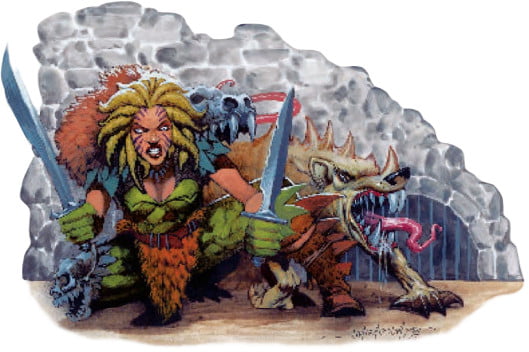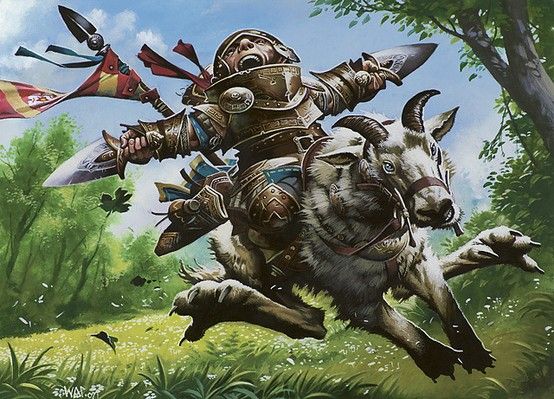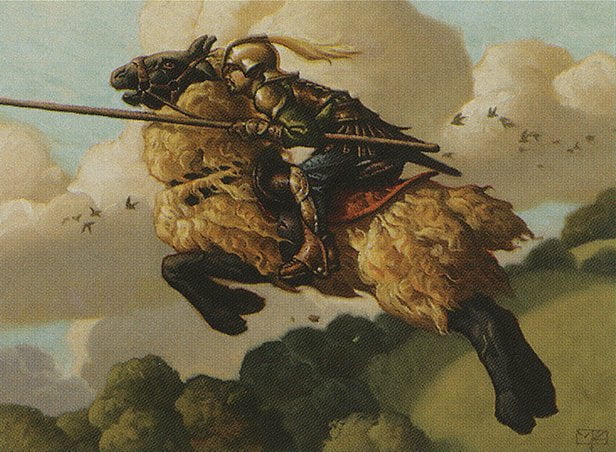Hey, do you wanna be agile, hostile, and mobile in 3.5 and play a character whose primary and major ability is engaging in melee combat and not casting spells?
Let’s talk about the Supermount!
Okay, so the Supermount class describes a character who rides around on a Supermount, the thing. The Supermount is what happens when you use the Devoted Tracker feat to designate a Ranger’s Animal Companion and a Paladin’s Special Mount as the same creature. What this means is that (for example) at level 10, a build could have a mount of a level 9 Paladin that is also the animal companion of a level 9 druid.
What’s that look like?
Well, it looks like a riding dog with 12 hit dice, a strength of 20, a bunch of feats, and you don’t even have to be on it for it to bite people. I mean, you should be on it, because you can ride around on it, and charge and hit things very hard with a lance, but the fact you’re a level 10 character who represents 22 hit dice is pretty impressive. You can protect your mount with a skill check (!!!) and there’s a whole range of cool animals you could pick to make into your mount with the DM’s permission.
What’s more, there’s just not a lot of demands in the build; your skills are largely free and open so you can play a nature nerd character, your stats aren’t under pressure so you can have a fairly even spread, and your cohort right next to you can, through more and weirder upgrade patterns, get cool weird stuff, if you want to pursue them.
How do you put this together?
The simplest way to build this Supermount design is to level up Paladin and Ranger, get an animal companion and special mount, take the Devoted Tracker feat, then level up in the Wild Plains Outrider and then Halfling Outrider prestige classes.
Buuuut you can squeeze it a little harder if you want.
See, there’s this prestige class, the Beastmaster, which gets you an animal companion at first level. So if you want you can go level 5 Paladin (get yer mount), level 6 Beast Master and take Devoted Tracker, then level 7 and onward you’re picking up levels of Wild Plains Outrider into Halfling Outrider. Going this route, and eventually taking the Improved Animal Companion Feat, you’re looking at a character at level 20 who has a level 19 Paladin mount and a level 19 Animal Companion. That’s 20 more hit dice, +22 extra natural armour, +10 strength, and a bunch of feats and special abilities.
My personal benchmark for a possible mount is the Deinonychus. You have to take a small level hit (not enough to change those end numbers) for your mount, but it winds up a medium animal with a multi attack pattern of talons-bite-claw-claw, that can pounce on things, is smart as an adult, when it charges something then you get to make a full attack from its back.
And this is all doable because you’re a halfling and that means you get to run around on a medium-sized mount in indoor situations scaled for bigger people.
I’m so fond of the Supermount. Part of why I’m fond of it is because it’s a melee combatant that the halfling can do best (but if you asked me nicely I’d totally let you do it with a Goblin).
When I look back on 3rd edition D&D it can feel a bit like my dad looking over at the classic speedway racers and f1 competitors of my own childhood. There’s a wistfulness at these people trying to excel at this particular type of job, despite the way the laws of physics are asserting oh so loud and clear at you you shouldn’t be doing this. Except in my case, the Laws of Physics are instead the rules system.
Ostensibly speaking, the rules of 3rd edition D&D were about constructing a meaningful reality, but also about maintaining the state of a reasonably balanced game. This conflicting pair of demands can be maintained with discipline but they need a lot of oversight to maintain, and it can run into problems when the vision of balance is imagined to look kinda like this:
But the reality is a bit more like this:
And yeah, part of that mismatch means the game rules can sometimes seem to stand completely confused by what your character, as built, can do. Like, even builds that seem to work just as the rules indicate can sit as weird outliers, like, oh, say, the classic Wizard 5/Mage of the Arcane Order 10/Archmage 5 — that’s not a challenging build to come up with, and there’s no way to look at that character design and infer you were somehow making things that shouldn’t interact sit next to one another.
But, when you look at a bunch of these retrospectives about ways that D&D 3.5 character builds could get weird or strong or scary, you almost always are bringing things from two unrelated sources together in a way that it’s easy to feel ‘shouldn’t’ work together even if they’re stated as if they do. This class lets you do things with this restriction, and this other class lets you ignore this restriction, well, maybe they’re not supposed to work together like that.. right?
It’s why it’s nice to have a clear and blatant example of a time the game rules meant for things to work this way, with an example.





1 Trackback